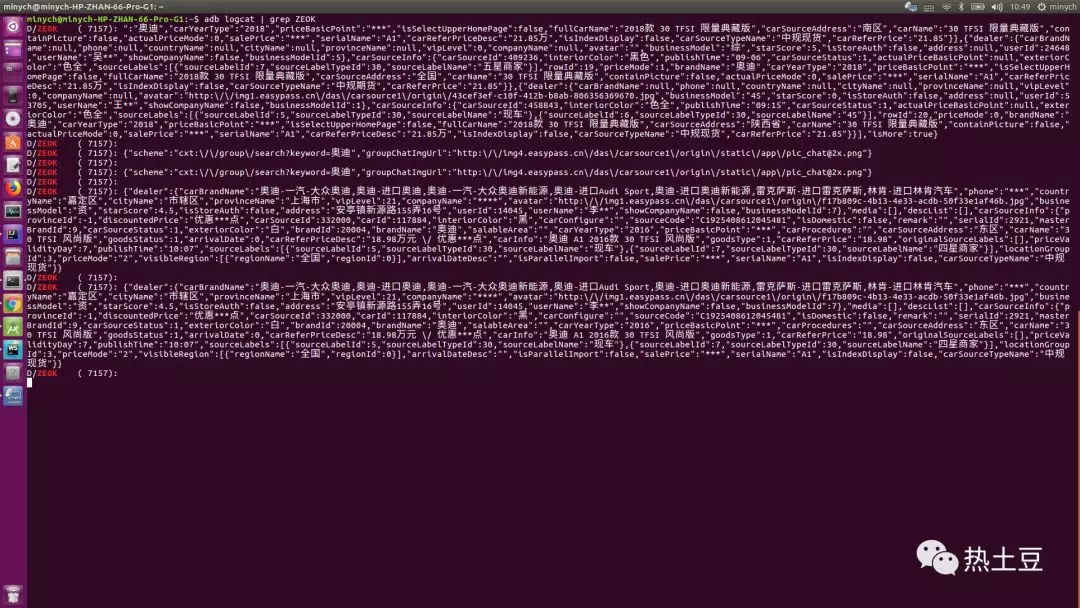本文涉及内容的源码地址:https://github.com/minyangcheng/JiaGuSample
破解一个app
步骤一:脱壳
脱壳简单来讲其实就是获取app dex文件(应用源码编译的结果都被放在dex文件里面),我这里介绍下以下两个简便的方法,基本上能成功脱壳市场上80%的应用,这次公司业务需要破解的应用,用方法二都能成功脱壳。当然你也可以用ZjDroid、DexHunter等工具。
脱壳方法一
原理:Android4.4以上开始使用ART虚拟机,在此之前我们一直使用的Dalvik虚拟机,ART虚拟机需要用dex2oat将未加密的dex数据编译成oat,那么加固的壳一般都会在dex2oat的之前进行dex解密,因此通过修改dex2oat的代码,在其中插入一段将解密后的dex写出来的代码,即可dump出解密后的dex。
- 一个android4.4系统虚拟机
- 修改代码后的dex2oat(用于替换/system/bin/dex2oat位置的文件)
- 在开发者工具里面将运行环境选择为:ART运行模式
- 重启虚拟机,安装app,启动app
脱壳方法二
原理:android中的java.lang.Class类拥有一个方法public native Dex getDex();,这意味着我们能通过Class对象的getDex方法获取到Dex对象,Dex类中有一个方法public byte[] getBytes(),我们能通过此方法获取获取该class对象关联的dex数据。这里采用的是Xposed去hook应用的ClassLoader.loadClass方法区dump解密后的dex数据。
- 一个root过的手机,系统要求在4.4到6.0之间
- 安装xposed:该工具的原理是修改系统文件,替换了/system/bin/app_process可执行文件,在启动Zygote时加载额外的jar文件(/data/data/de.robv.android.xposed.installer/bin/XposedBridge.jar),并执行一些初始化操作(执行XposedBridge的main方法)。然后我们就可以在这个Zygote上下文中进行某些hook操作。
- 安装dumpdex:自己写的一个可以脱壳的app,实际上是一个xposed模块
- 安装需要脱壳的app
- 重启手机,启动app
步骤二:从dex文件和apk文件中获取app代码和资源
将脱壳后的dex和源app放在一个统一目录下,运行以下脚本,获取app源码和资源。
该脚本其实是调用jadx工具来实现反编译,然后用Intellij打开生成的dist目录,将sources标记为sources root,将resources标记为resources root,即可开始分析应用的代码。当然你也可以用Source Insight等工具进行源码分析。
|
|
步骤三:动态分析
如果你是为了爬取app的数据,就去针对app的网络请求层进行分析,通过分析得出这个app的请求网络传输参数和加密逻辑,然后你可以通过xposed在关键方法上设置一个切面,甚至你可以直接将app的网络加解密代码提取出来,通过接口请求去爬去数据。
如果你是为了用app的某个收费功能,就去该功能页面的入口处,寻找判断该收费能否使用的代码,然后通过xposed直接hook掉判断逻辑即可。
这里推荐一个动态分析工具Inspeckage,它是一个基于Xposed开发的一款应用,核心功能有监控Shared Preferences数、加密、哈希、SQLite、HTTP、WebView数据,还能动态添加新钩子。

步骤四:hook掉关键的方法
写一个xposed模块直接hook找到的关键方法,我这里发现该app在数据返回的时候总会去调用com.easypass.carstong.protocol.bean.ResultBean.getData
|
|
最后我们就能查看接口数据的返回:

了解app加固
对app进行加固,可以有效防止移动应用被破解、盗版、二次打包、注入、反编译等,保障程序的安全性、稳定性。加固技术这几年也是不断在迭代,各厂商所采用的技术也不一样。
- 360基本上是把原始的dex加密存在了一个so中,加载之前解密
- 阿里把一些class_data_item和code_item拆出去了,打开dex时会修复之间的关系,同时一些annotation_off是无效的的来防止静态解析
- 百度是把一些class_data_item拆走了,与阿里很像,同时它还会抹去dex文件的头部;它也会选择个别方法重新包装,达到调用前还原,调用后抹去的效果
- 梆梆和爱加密与360的做法很像,梆梆把一堆read,write,mmap等libc函数hook了,防止读取相关dex的区域,爱加密的字符串会变,但是只是文件名变目录不变
- 腾讯针对于被保护的类或方法造了一个假的class_data_item,不包含被保护的内容。真正的class_data_item会在运行的时候释放并连接上去,但是code_item却始终存在于dex文件里,它用无效数据填充annotation_off和debug_info_off来实现干扰反编译
实现一个简单加固
前置知识
- 类加载
类加载采用的是ClassLoader子类完成,具体作用是将class文件按需加载在VM虚拟机中,加载过程采用的是双亲委托来完成。
java中的类加载器:
| ClassLoader | 作用 |
|---|---|
| BootStrapClassLoader | 加载sun.boot.class.path环境属性下的jar或class文件,C++编写 |
| ExtClassLoader | 加载java.ext.dirs环境属性下的jar或class文件,父加载器为:BootStrapClassLoader |
| AppClassLoader | 加载java.class.path环境属性下的jar或class文件,父加载器为:ExtClassLoader |
android中的类加载器:
| ClassLoader | 作用 |
|---|---|
| BootStrapClassLoader | Android系统启动的时候被创建,加载一些Android系统框架类 |
| PathClassLoader | 加载一些系统类以及应用程序类,父加载器为:BootStrapClassLoader |
| DexClassLoader | 加载jar、apk、dex文件,父加载器可以根据需求设置 |
- dex文件格式
dex文件的基本结构:
010Editor查看dex文件(数据区data不展示):
上面两张图片展示了dex文件的基本结构和一些数据块基本含义。具体每个数据块的作用和含义,请自行查看官方文档或谷歌搜索。
我们这里需要用的有:
- checksum: 文件校验码,使用 alder32 算法校验文件除去 maigc、checksum 外余下的所有文件区域,用于检 查文件错误。
- signature: 使用 SHA-1 算法 hash 除去 magic、checksum 和 signature 外余下的所有文件区域, 用于唯一识别本文件 。
- file_size: dex 文件大小
实现思路
源应用、壳应用、加固脚本:
- 被加固的应用称为源应用
- 解密并加载源应用的应用称为壳应用。壳应用中有个自定义的
Application类,该类主要作用是解密源应用,创建DexClassLoader,在运行的时候替换默认的ClassLoader,重建application实例
|
|
- 加固java脚本:将源应用apk文件二进制流写入壳应用classes.dex末尾,并修改dex文件的检验码、签名、文件大小
|
|
手动加固步骤(参考此步骤就能对app进行简单加固,实际上这就是最早期的加固操作原理):
- 解压壳应用和源应用apk文件
- 将源应用中的res、resources.arsc、assets、AndroidManifest.xml文件拷贝替换到壳应用中
- 将AndroidManifest.xml中application节点的属性android:name修改为壳应用中
Application类的类路径 - 将源应用apk文件的二进制字节流加密后,写入到壳应用的classes.dex末尾
- 将壳应用目录压缩为zip包,重命名为
unsign.apk - 签名
jarsigner -verbose -keystore minych.jks -storepass 123456 -signedjar signed.apk unsign.apk minych